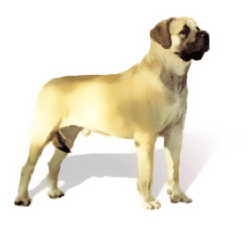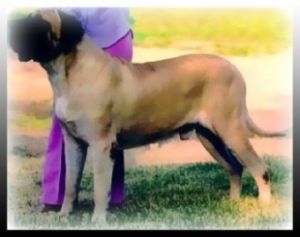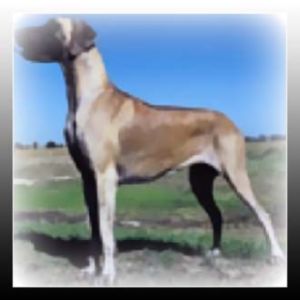
Bimbo in the refuge caravan
Saturday April 1, 2006: April Fool’s Day. Second visit to the refuge today. It’s a beautiful day, how a south of France day should be; bluest sky, slight breeze, the odd cloud wafting along – unlike that first visit when it rained all day long - the day I adopted Columbo and Rox.
Katie – beautiful, talented, artistic Katie - who created and works on the Pension Milou website, is with me. She, to take photos of the dogs for the Refuge de Flassans website and me to take notes.
We take our time; get to know some of the dogs. I go off and find Benji, a beautiful Griffon I’d noticed last time. I’d looked at his photograph and thought about him over the weeks, wondered if I shouldn’t perhaps adopt him but he’s a lively dog, perhaps too lively for life at Pension Milou, especially with Columbo and his epilepsy. I have enough lively dogs en pension as it is! Anyway I’ve not come to the refuge today to adopt a dog, that’s for sure.
Katie is taking hundreds of photos; we go in and out of runs to speak to the dogs – so many great dogs here who will make superb family pets if only they can find new owners.
Eventually we are thru and gather at the entrance to the refuge to say our goodbyes: to Marjorie and Maria, the caring English bénévoles (volunteers) who go to the refuge every Saturday to help feed the dogs, and to Nicole, the hard-working English girl who works there now.

Meeting Bimbo
I look around: a black and tan hound, with the longest ears I’ve ever seen, lumbers towards us, gently wagging his tail. I don’t know where he’s come from. Maria explains that this is Bimbo and he’s sleeping in the caravan at the moment, as he’s not been well.
I'd heard about Bimbo. Knew that he often gets massive ear problems. Both ears had been operated on in the past but he needs further surgery. He is recuperating, following some veterinary treatment, from another spell of infection and fever. Maria tells me she feared for his life the week before - he had been so wobbly on his legs and refused food. Today, he's weak but he comes out to greet Maria, who has been giving him special food to tempt him to eat. She says he is much better than he'd been the week before.

In the caravan
He wanders back into the caravan and I go in. He’s lying in the corner on an old mattress looking pathetic as only hounds can. Hang dog helpless. I leave the caravan. I go back in again. I come out and say, ‘Perhaps I’ll give it some thought. See how it goes. Maybe I’ll take him another time.’ Maria tells me I should only take him if I feel it’s absolutely right. Then Katie comes up and says, ‘Oh brilliant, Jilly, you are going to take Bimbo.’ She’s right of course. I couldn’t have left without him. And so whilst Nicole and I sort the paperwork in the office, Maria, Marjorie and Katie, get Bimbo into the car.

Maria & Marjorie caring for Bimbo - I'm off to do the paperwork

In the car, waiting to leave the refuge
Once home, I bathe him but avoid his poor ears. On Monday we go to Louise, my vet. She draws two full syringes of nasty viscous fluid from a big lump way below his ears. She confirms it's not an abscess and says he’ll need specialist surgery but first puts him on antibiotics for a couple of weeks. Then he goes to Dr. El Baze in Nice. He is four and a half hours on the operating table. It’s a complicated operation.
The vet has to unravel the nerves that lead from ear to eye – he says he is concerned that Bimbo’s eye reflexes will work properly. For the moment he’s having les larmes artificielles (artificial tears) three times a day and we’ll know in three weeks if there is any lasting damage to those nerves. Dr. El Baze has removed both eardrums. Bimbo has stitches right along the edges of the ear, the ear canal and way down his neck on both sides. With his head shaved on either side and all the stitching, he looks like some punk rocker except this dog won’t hear music of any sort again.
The vet asks me something about my car. I find him difficult to understand. I assume he is asking if my car is comfortable, concerned that it won’t be too bumpy a ride for poor Bimbo. ‘Well it’s an old car,’ I say, ‘15 years old, but the ride will be smooth enough and I’ll drive slowly and carefully round bends and up the hills. Maybe he should stay in the surgery overnight,’ I suggest. ‘No, no,’ he says, ‘I’m asking about your car because he is dripping serum all over the place and I don’t want your car to get messed up.’ Well, thank God for that, I think: the car passes muster. I tell him, ‘Dog people don’t have posh cars.’

A shaved, stitched and poorly Bimbo
Bimbo drips serum and blood all the way home and continues to do so for several days. The swelling in both ears is horrendous and burning hot to the touch. He’s on painkillers and antibiotics to fight the massive staphylococci and streptoccoci infections. Poor dog, he has a very bad two or three days but then, miraculously, he starts to get better. So much so that by the fifth day, following the operation, he’s up on his hind legs trying to steal food of the counter. Good boy!
I’ve never seen a Bruno de Jura before and that’s what Bimbo is - bit like a Thurber dog really. They are one of six varieties of Swiss Hound that go back to antiquity. A mosaic found in Avenches places them in the Roman Helvetia era. In the 15th century the Swiss Hound was popular among Italian dog-lovers, and in the 18th century it was extremely popular with the French. The breed standard for the Swiss Hound was established in 1882 and revised in 1909.

I can tell you that Bimbo is the most gentle dog, very intelligent and best of all, he makes my most favourite sound in all the world: thump, thump, thump - the thump of a contented dog’s tail everytime I walk past his chair.













